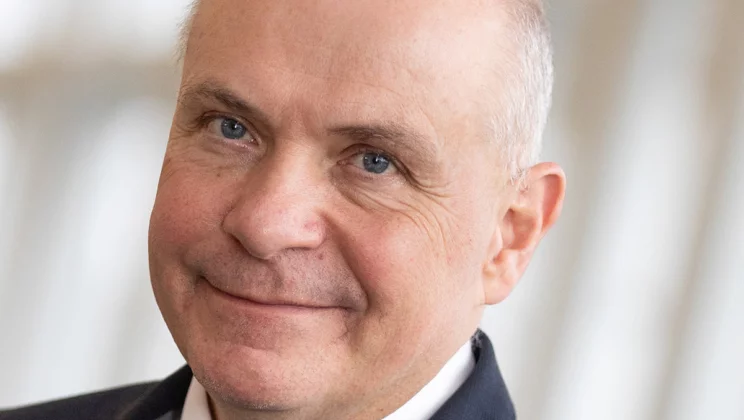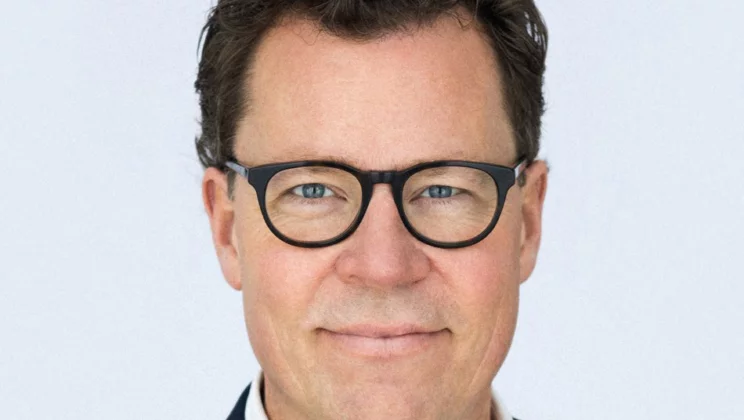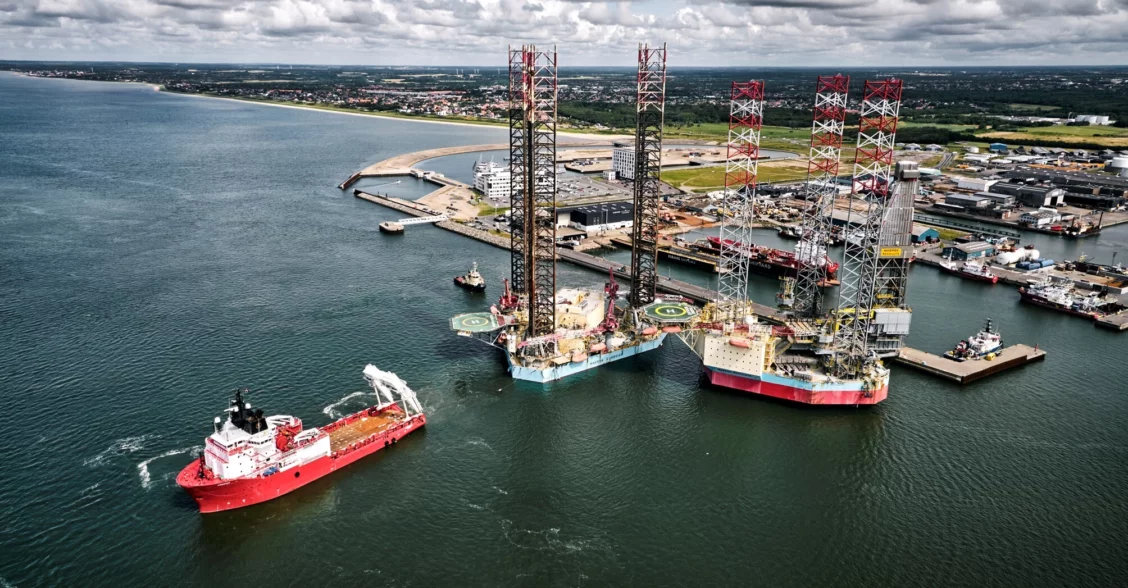In a new strategy for offshore wind, the European Parliament expects that investments of more than six billion Danish kroner will be needed by 2050 in order to reach the ambitious targets. MEP Morten Helveg Petersen, who drafted the agreement, says the companies at Port Esbjerg will be “rushed off their feet”. Port Esbjerg’s new chairman, Søren Gade, refers to the strategy as the foundation of the port’s future.
A large majority in the European Parliament adopted the new strategy for offshore wind as part of the EU’s goal of reaching climate neutrality by 2050. The strategy confirms the ambitious targets of at least 300 GW of offshore wind capacity by 2050 and at least 60 GW by 2030.
However, if Europe is to succeed in meeting these targets, it will take massive public investments of over six billion Danish kroner to cover both new offshore wind farms and a major expansion and upgrade of the infrastructure. And this will have a major impact on Europe’s ports, explains Helveg Petersen:
“I’m delighted, because this decision is absolutely crucial. Now we’ve secured broad political support. It’s not just Denmark and the UK that are committing themselves to these targets. It’s the entire EU. The companies at the port of Esbjerg will do well to prepare to be rushed off their feet.”
Port Esbjerg’s new chairman, Søren Gade, an MEP for the Danish ‘Venstre’ – a conservative-liberal, agrarian party – is also very clear about what the new strategy will mean for the port of Esbjerg:
“This strategy forms the basis for the future work in both Esbjerg and the rest of Europe over the next many years. Take a calculator and work out how many turbines it’ll take to reach 300 GW. The figure is staggering.”

The new chairman of Port Esbjerg, Søren Gade, is optimistic on behalf of the port.
Ports critical to success
The text of the agreement highlights port infrastructure as crucial to achieving the giant expansion of offshore wind capacity in Europe. Moreover, the European Parliament stresses that innovative ports will be in particular demand to ensure that the manufacturing, installation and maintenance of the offshore energy equipment will be both efficient and sustainable.
“The ports are central to the transition ahead. And the acceleration will be out of this world. This will apply to the manufacturers of turbines and towers, to subcontractors, ancillary industries and, indeed, the entire value chain. And not least the port of Esbjerg itself," says Helveg Petersen and he adds:
“It’ll be a challenge to keep up. But it’s precisely in this area that Esbjerg has the edge.”
He points out that the port of Esbjerg is in a very strong position compared to various other ports which will have to scale up to be ready. Esbjerg already has the necessary know-how, facilities and infrastructure in place or in the pipeline.
“Esbjerg will become a hub,” says Helveg Petersen, who has visited the port of Esbjerg several times.
Pace nowhere near fast enough
Cutting red tape will be key if we are to succeed in implementing the strategy. To achieve the ambitious EU targets for 2030 and 2050, the pace needs not just to double, it needs to double many times over. Five times the current offshore wind capacity needs to be built in just eight years.
Helveg Petersen believes that in purely practical terms, this is possible – provided the bureaucratic hurdles are cleared. Working on the strategy, the MEPs were repeatedly surprised by the complexity of the processes prior to an offshore wind project.
“I didn’t realise how involved it all is. For every wind farm, you’ve got to carry out studies and complex consultation processes on everything from biodiversity to the impact of the ocean current. You need permits galore, and there’s a battle for space. Though the sea is vast, fishermen, the navy and shipping companies fight over space. Everyone’s interests need to be considered, and that takes time. Which we don’t have. That’s clearly the greatest challenge as to whether we’ll succeed in reaching our targets,” explains Helveg Petersen.
An unpleasant surprise
At the same time, Europe faces a very complex logistical challenge. There will be challenges relating to port capacity, pressure on shipping processes, shortages of components and raw materials.
“There are lots of pitfalls,” says Helveg Petersen.
However, he is an inveterate optimist. Not least for Denmark, as our country is situated in the North Sea, where “other countries would give their right arm to be,” he says.
And in addition to our fortunate location in the North Sea, we are on good terms with our neighbours, such as Germany, which makes it easier for us to work across borders.
“At the risk of sounding a little conceited, the vision is that we could become the equivalent of the sheikhs in the Middle East, because we have such excellent opportunities,” says Helveg Petersen.
Countries like the Czech Republic and Luxembourg do not have similar coastal access. Unsurprisingly, they also have more reservations about the strategy.
“I’m delighted and relieved that we’ve finally set the direction. It wasn’t as easy as you might think to get support. In other parts of the EU, there’s not the same consensus as we’ve got in Denmark, so the adoption of the strategy was crucial,” explains Helveg Petersen.

Morten Helveg has been the penman for the new strategy from the EU, and he predicts busy times for Port Esbjerg.
Necessary investments
Søren Gade, who helped vote through the strategy in the European Parliament, welcomes the strong signal that the strategy sends:
“Now we’ll have strengthened cooperation in Europe, which also makes it more likely that we’ll achieve the targets. We really need that, because it’s a huge task. However, now the market knows that the train has left the platform,” he says.
And according to Gade, major companies across Europe have followed suit and prepared for the task ahead, just as the port of Esbjerg.
“But it’s not enough. Success doesn’t come by itself. Esbjerg Local Authority will have to spend money on further investments, and so will the businesses. This is also a way of ensuring that companies from all over Europe will think that Esbjerg is a good place to get established, because there are excellent facilities and a strong professional environment with many companies,” he says.
Gade recently visited ten different companies at the port, which gave him lots of confidence:
“I feel very optimistic for the port. I spoke to representatives from ten different companies and not one expressed any misgivings. Now that’s unusual. Everybody was ready to invest and take the risk. In Esbjerg, we’re quite good at adapting to the current situation. We’ve done that in the past, and that’s why I believe that there’s now the necessary willingness to change. I’m beyond proud!,” he says.
Sustainable ports will have the edge
When investments are being made in the coming years, Gade believes that the ports’ own conduct during the green transition will also be taken into account. He thinks that the most sustainable ports will have the edge. This applies to everything from securing shore-to-ship power or green fuels and the demands made on subcontractors.
“Everything is a competitive parameter. Esbjerg is doing well, but other ports have also moved up in recent years. So I’d rather say that if you haven’t become greener, you’re out. You’ll lose investments and licence to operate,” says Gade.
With a huge upward revision of targets for European offshore wind capacity, we’d also have to consider the risk of bottlenecks and a shortage of skilled labour. However, Gade isn’t worried about that happening in Esbjerg:
“Esbjerg is in a favourable position. In Denmark, higher education departments are moving away from the largest cities, which also benefits Esbjerg. Moreover, young people today have completely bought into the green transition. They want jobs which make sense both emotionally and intellectually. The green transition is very important in Esbjerg, and it’ll have an impact. The companies in the green transition will have less difficulty recruiting than those doing something else,” he says.
The biggest challenge, however, will be to secure the right investments, which is why companies need a clear investment plan that ties in with the EU strategy.
“There’ll be lots of projects, but they’ll have to be won. So healthy companies will be fine. However, investment is needed to compete. Fortunately, there’s a huge range of businesses at the port that are eager to invest. We’ve got the solutions of tomorrow, and research is being done into tidal water and wave energy as well as other renewable energy technologies,” explains Gade.
The vision for the future of Esbjerg
With the new European strategy as a backdrop, it is hard not to be optimistic about the future of Esbjerg. Looking ahead a decade, Gade sees a bright future for Esbjerg:
“With the support of this strategy, I’m convinced that within a decade, there’ll be an energy island in the North Sea, and the maintenance of this island will be carried out from Esbjerg and other ports on the west coast of Jutland. In addition, we’ll be busy with wind energy projects. It all looks very positive,” he says.
However, according to the chairman, this is because the port and the city have been forward-looking and took action to prepare for this development. He points out that it is not the first time that Esbjerg has had to adapt:
“We’ve been fortunate that the people with influence have been forward-looking, preparing Esbjerg for the boom that’s starting now. That’s why we’re so well equipped,” says Gade.
The report is available here: https://www.europarl.europa.eu/doceo/document/A-9-2021-0339_EN.pdf
Go to overview

